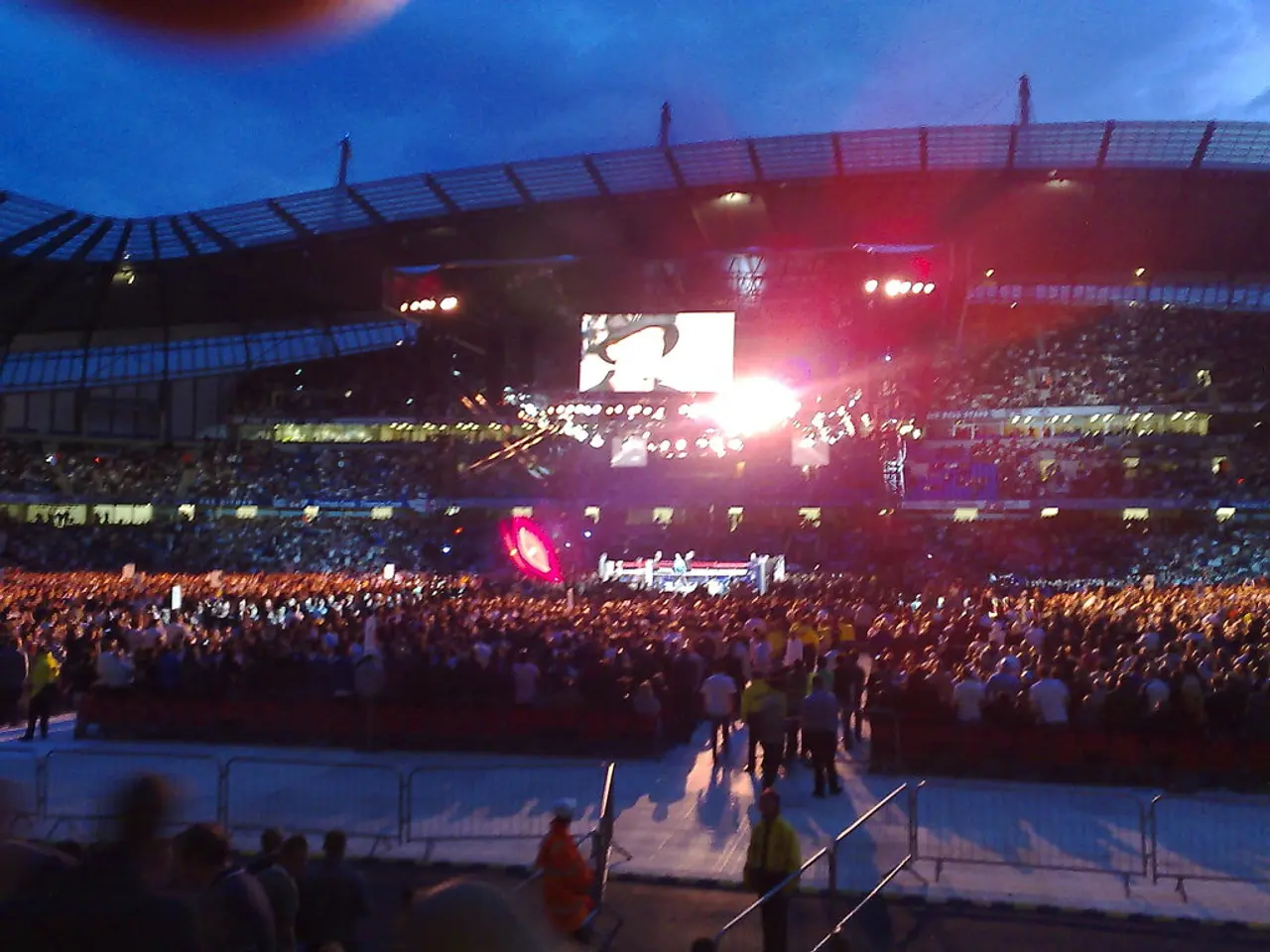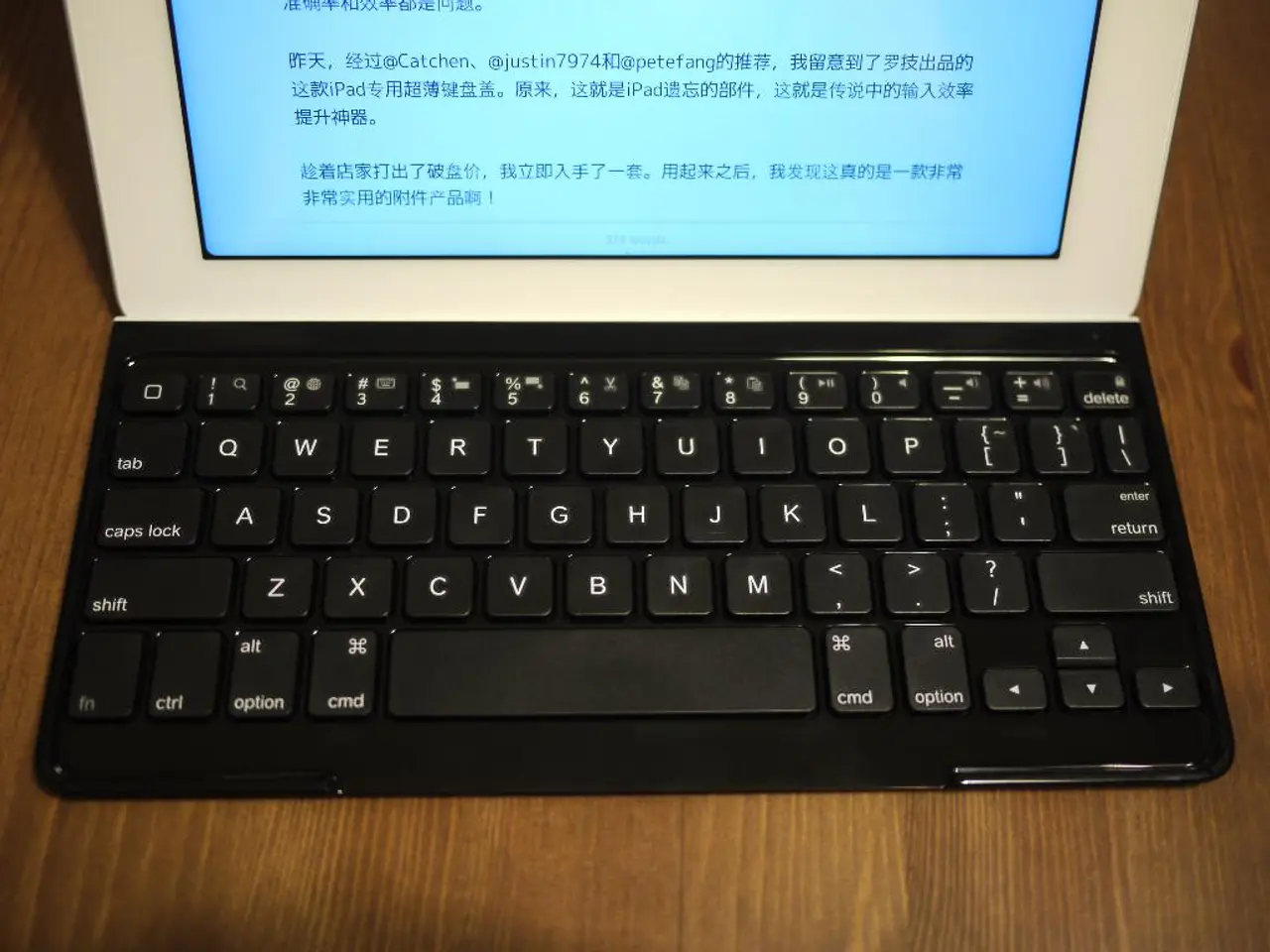Guide to Expertly Capturing Vocal Performances
In the realm of recording vocals, the choice of microphone can significantly impact the quality of your sound. Here's a guide to help you make an informed decision, focusing on three popular options: the Rode NT1, Shure SM7b, and condenser microphones in general.
Firstly, let's discuss the Rode NT1. This cardioid condenser microphone is renowned for its extremely low self-noise of 4.5 dBA, ensuring clean, clear recordings that capture every vocal nuance. Its neutral tone suits nearly all voice types, and it can handle loud sounds up to 132 dB SPL. The rugged metal body adds durability, making it a reliable choice for singers, voiceover artists, podcasters, and home studio musicians. The Rode NT1 delivers clarity without harshness, making it a versatile option for a variety of recording needs[1][3].
Next, we have the Shure SM7b, a dynamic microphone popular in professional broadcasting and music studios. It offers a flat frequency response, with switchable settings for bass roll-off and high-frequency presence boost, allowing for a tailored vocal sound. The Shure SM7b doesn’t require phantom power, has excellent off-axis noise rejection via its cardioid polar pattern, and includes built-in pop filters and shock mounts to reduce plosives and handling noise. It handles loud sources without distortion, making it versatile, especially for untreated spaces or loud environments[3][5].
Condenser microphones, in general, are highly sensitive and capture detailed voice nuances, breath sounds, and room ambiance, which is ideal for voiceovers, singing, and acoustic recordings. Their wide frequency response (typically 20 Hz to over 20 kHz) captures tonal warmth effectively. However, they are more likely to pick up background noise, so microphone placement, close talking distance (6–12 inches), and room treatment or pop filters are recommended to maximize clarity in home studios[2][4].
When choosing between condenser and dynamic microphones, consider your room treatment, vocal style, and recording needs. Condensers like the Rode NT1 suit controlled, quiet environments needing detail and clarity, while dynamic mics like the Shure SM7b are better for untreated rooms or louder sources, offering durability and background noise rejection.
Other essential equipment for a vocal recording studio includes 1-3 condenser microphones, 1 dynamic microphone, a few mic stands, a pop filter, good studio headphones, and acoustic isolation. Smaller devices like the CAD Acousti-Shield 32 and sE Project Studio Reflexion Filter can help reduce acoustic reflections in a home studio.
Remember, the singer's comfort and happiness in the studio can greatly affect the quality of the recording. The monitor mix for the singer should be set up carefully, as what the singer hears can have a big impact on the quality of the recording.
Modern studios benefit from computers, hard drives, and DAW programs, allowing multiple takes of vocal lines to be captured without using up too much tape or storage space. Essential post-recording techniques include comping, the process of choosing the best versions of multiple takes and piecing them together inside a DAW, and recording the best take to a new track inside the DAW for easier processing and effects during mixing.
In conclusion, the right microphone can make a world of difference in your vocal recordings. Whether you opt for the Rode NT1, Shure SM7b, or a condenser microphone, remember to consider your environment, vocal style, and recording needs to achieve the best possible results.
[1] Rode NT1 User Manual [2] Condenser Microphones: The Ultimate Guide [3] Shure SM7b User Manual [4] Condenser Microphones: Pros and Cons [5] Shure SM7b Review
- The choice of microphone significantly impacts the quality of sound in music production, and a popular option for vocals is the Rode NT1, a cardioid condenser microphone known for its low self-noise and neutral tone.
- Another highly regarded microphone is the Shure SM7b, a dynamic microphone prized for its flat frequency response and excellent off-axis noise rejection.
- Apart from these specific microphones, condenser microphones in general are ideal for voiceovers, singing, and acoustic recordings due to their high sensitivity and wide frequency response.
- The choice between condenser and dynamic microphones depends on your environment, vocal style, and recording needs; for example, controlled, quiet spaces require clarity and detail provided by condensers, while dynamic mics offer durability and background noise rejection for untreated rooms or louder sources.
- A home studio for vocal recording should include essential equipment such as multiple microphones, mic stands, pop filters, studio headphones, acoustic isolation devices, and technology like computers, hard drives, and DAW programs for better efficiency during recording and mixing.
- Comfort and happiness of the singer in the studio are crucial factors affecting the quality of the recording, and careful setup of the monitor mix and essential post-recording techniques like comping can help achieve optimal results.




